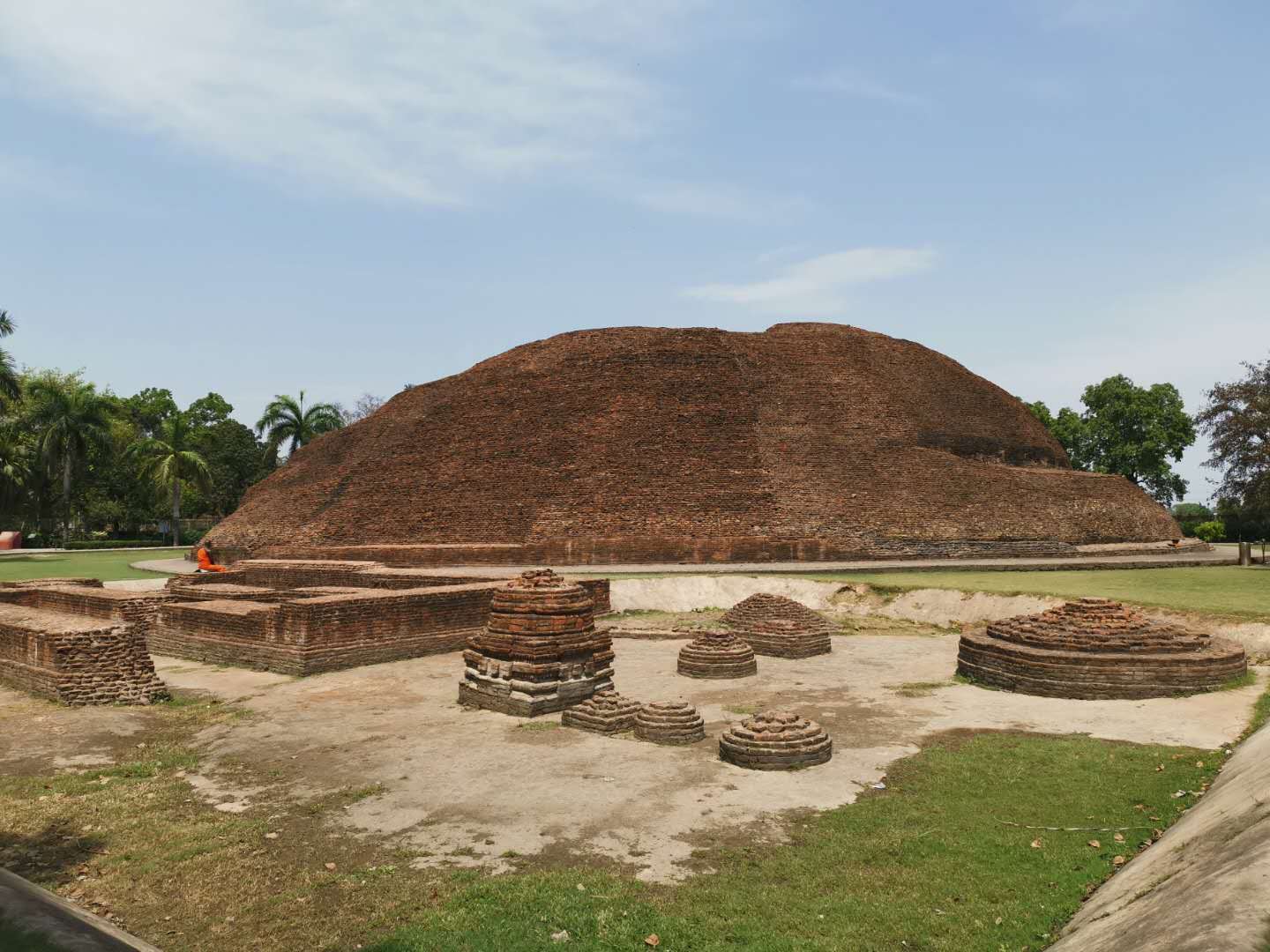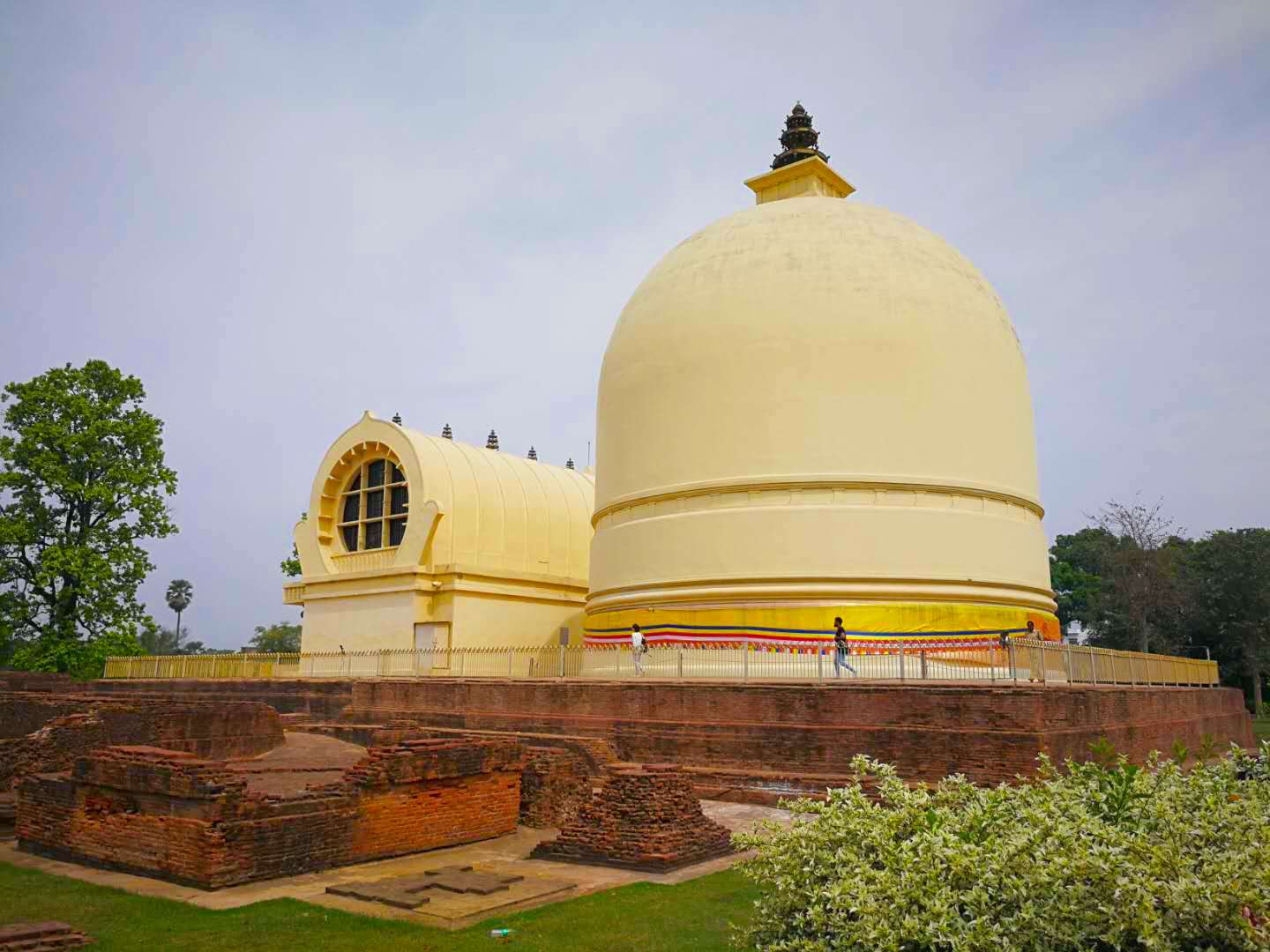Kushinagar
Kushinagar is a district of the state of Uttar Pradesh in India situated in the easternmost part of the state. It has the administrative headquarters at Ravindra Nagar Dhoos. The district is named such after the town Kushinagar, a Buddhist pilgrimage site where Gautama Buddha attained parinirvana in the 5th century BCE.

Location of Gautama Buddha’s parinirvana. In 1896, Waddell suggested that the site of the parinirvana of Gautama Buddha was in the region of Rampurva.However, according to the Mahāyāna Mahāparinirvāṇa Sūtra, the Buddha made his journey to Kushinagar, died there, and this is where he was cremated. It is believed that during his last day he walked into the groves of trees near the city and rejoiced at the blossoms of sala trees (Shorea robusta) before laying himself to rest.
Ashoka built a stupa and pilgrimage site to mark Buddha’s parinirvana in Kushinagara. The Hindu rulers of the Gupta Empire (fourth to seventh century) helped greatly enlarge the Nirvana stupa and Kushinagar site, building a temple with reclining Buddha. This site was abandoned by Buddhist monks around 1200 CE, who fled to escape the invading Muslim army, after which the site decayed during the Islamic rule in India that followed. The British archaeologist Alexander Cunningham rediscovered Kushinagara in the late 19th century, and his colleague A. C. L. Carlleyle unearthed the 1,500-year-old Buddha image. The site has since then become an important pilgrimage site for Buddhists. Archaeological evidence from the 3rd century BCE suggests that the Kushinagara site was an ancient pilgrimage site.
The Parinirvana Temple with the Parinirvana Stupa. The reclining Nirvana statue of the Buddha is inside the Parinirvana Stupa. The statue is 6.10 metres long and is made of monolith red sandstone. It represents the “Dying Buddha” reclining on his right side with his face towards the west. It is placed on a large brick pedestal with stone-posts at the corners.
Nirvana Chaitya is located just behind the Main Parinirvana Temple. It was excavated by Carlleyle in the year 1876. During excavations, a copper plate was found, which contained the text of the “Nidana-Sutra” which concluded the statement that plate had been deposited in the Nirvana-Chaitya by one Haribala, who also installed the great Nirvana Statue of Buddha in the temple front.
Coming out of the temple, walk around on the site. Empty the mind. Time flows back. Maybe you may recall something happened to you right here. Maybe you will meet you in the past. One life after another, our appearance has changed many times, while deep inside, there is always something not changing. Where did you come from? With whom did you come with? Why are you here? Where are you going? Where is your home? Are you in a dream? When are you going to wake up? Are you still going to drift in the sea of transmigration? Have you really truly forgot everything?
Ramabhar Stupa was built on where the Buddha was cremated. The name may come from a nearby pond. It’s a covering bowl stupa made of bricks and mound. It’s 55 feet in height. It’s surrounded by many palm trees. Again, circumambulate the stupa and chant the name of the Buddha to pay homage to the Buddha. Leave time to walk around, meditate or recite some sutras here.
After visiting the Nirvana temple, Nirvana stupa and Ramabhar Stupa, we headed to Lumbini in Nepal. It’s a long road. It took some time to get into Nepal at the border. Driving in the streets, watching the faces of the people, get lost in the time and space.
Amitabha! Thank you everyone !

